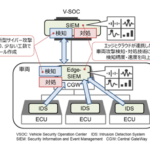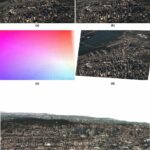2023-02-08 カナダ・ブリティッシュコロンビア大学(UBC)
◆サンゴは、周囲の海水が暖かくなりすぎると白くなります。これは白化現象と呼ばれ、サンゴは病気や死に対して脆弱な状態になります。温暖化は、気候変動や太陽放射によって起こる可能性があります。この放射線の一部は、雲によって吸収されることがあります。
◆UBCの研究者たちは、白化モデルに初めて雲を組み込むことで、75%が頻繁に白化する約10年前に、雲がサンゴ礁を「保護」することができると予測している。筆頭研究者のPedro González-Espinosaによると、これは中程度の排出シナリオの場合、2045年頃に発生し、世界は現在その方向に向かっている。
◆雲による保護を考慮しないモデルでは、2035年までに75%のサンゴ礁が頻繁に白化することが予測されている。
◆研究者らは、サンゴの高温適応能力も雲モデルに追加しました。中程度の排出量のシナリオでは、ほとんどのサンゴ礁が頻繁に白化するまでの「遅れ」は、2080 年までに約 35 年と予測されま した。「排出量が少ないと仮定しても、サンゴ礁は影響を受けるでしょう。今すぐ行動を改めましょう」とGonzález-Espinosaは言います。
<関連情報>
- https://news.ubc.ca/2023/02/08/clouds-could-delay-the-impact-of-climate-change-on-reefs-but-not-for-long/
- https://journals.plos.org/climate/article?id=10.1371/journal.pclm.0000090
気候変動がサンゴ礁に及ぼす影響の予測に曇りが生じる。 Cloudiness delays projected impact of climate change on coral reefs
Pedro C. González-Espinosa ,Simon D. Donner
PLOS Climate Published: February 8, 2023
https://doi.org/10.1371/journal.pclm.0000090
Abstract
The increasing frequency of mass coral bleaching and associated coral mortality threaten the future of warmwater coral reefs. Although thermal stress is widely recognized as the main driver of coral bleaching, exposure to light also plays a central role. Future projections of the impacts of climate change on coral reefs have to date focused on temperature change and not considered the role of clouds in attenuating the bleaching response of corals. In this study, we develop temperature- and light-based bleaching prediction algorithms using historical sea surface temperature, cloud cover fraction and downwelling shortwave radiation data together with a global-scale observational bleaching dataset observations. The model is applied to CMIP6 output from the GFDL-ESM4 Earth System Model under four different future scenarios to estimate the effect of incorporating cloudiness on future bleaching frequency, with and without thermal adaptation or acclimation by corals. The results show that in the low emission scenario SSP1-2.6 incorporating clouds into the model delays the bleaching frequency conditions by multiple decades in some regions, yet the majority (>70%) of coral reef cells still experience dangerously frequent bleaching conditions by the end of the century. In the moderate scenario SSP2-4.5, however, the increase in thermal stress is sufficient to overwhelm the mitigating effect of clouds by mid-century. Thermal adaptation or acclimation by corals could further shift the bleaching projections by up to 40 years, yet coral reefs would still experience dangerously frequent bleaching conditions by the end of century in SPP2-4.5. The findings show that multivariate models incorporating factors like light may improve the near-term outlook for coral reefs and help identify future climate refugia. Nonetheless, the long-term future of coral reefs remains questionable if the world stays on a moderate or higher emissions path.



